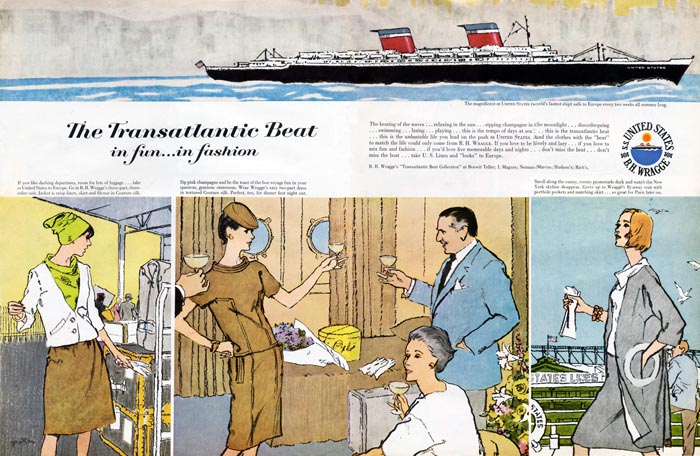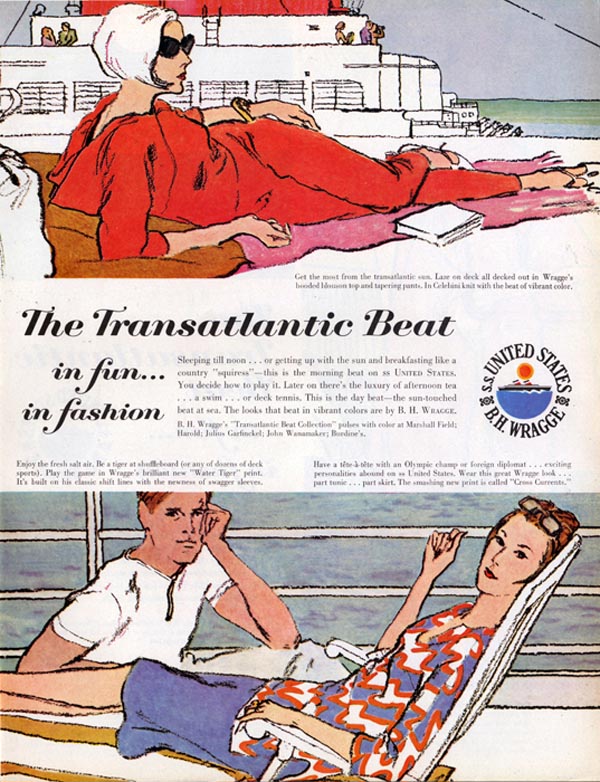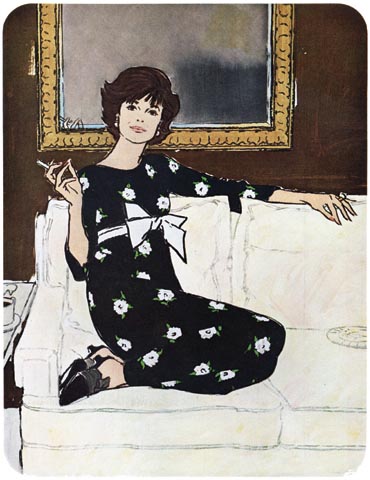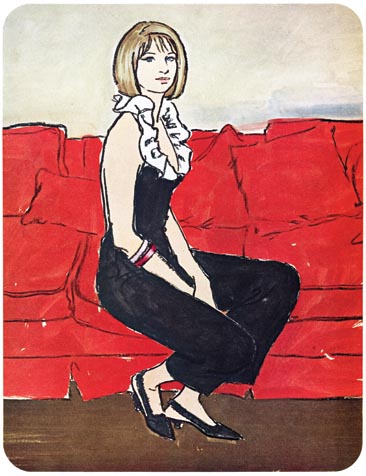Jack always approached an illustration job by drawing from a model. He’d hire models, draw them, and then find the appropriate reference to use for the background.

Jack's personal reference file was minimal so he would frequently spend entire days at the public library, hunting for the perfect piece of picture reference.

During that era in New York, there were many architectural firms who were capable of producing 'photostats'. Personal computers, Photoshop and even Kinko’s were still decades in the future. Jack would take his drawings to the architectural firms to get copied onto acetate and later paint underneath. Occasionally he’d skip that process all together and paint right on top of them, whatever he felt was right for the specific assignment.

Over time the business started to wear on him. His campaign for Coca-Cola demanded a lot out of him, requiring constant modification. Being so passionate and diligent about his work, Jack was exhausted by it. At the height of his career, he decided to quit and leave it all behind. He sold all his originals and moved to France.

A bit extreme, perhaps, but that was Jack being Jack. In his work and life he was never moderate.

After a year he moved back to NY where he continued teaching at SVA. He no longer pursued illustration work; he would often tell his students, “All I have to worry about is YOU.” He focused all of his energy on teaching.

A friend told me about a conversation she once had with Jack. They were on the phone, talking about a new teaching gig she had just started. It was difficult and the students demanded a lot out of her. Jack replied, “You simply have to give.”
Continued tomorrow...
* Daniel Zalkus is a freelance illustrator, graduate of the School of Visual Arts and loves to wear plaid. To see samples of his artwork please go to www.zalkus.com
* My Jack Potter Flickr set
Can you still get drawings copied onto acetate? And what kind of paint did he use?
ReplyDeleteGreat post!
Ah yes, Jack. Years ago when I was just about to graduate from Parsons School of Design as a fashion illustrator (fashion illustration was a major then!) several teachers told me I HAD to take Jack's class at SVA if only for one semester. Despite the fact that I'd just finished three and a half years of studio classes, Jack's class was considered a rite of passage. Everyone took his class; Antonio, Barbara Perlman and countless other. I interned with Antonio for about a month and when I told him I was thinking of taking his class, he said what everybody, that i had to do it. I don't think there's art teacher today with that kind universal recognition and respect.
ReplyDeleteAndroid-
ReplyDeleteI think you can get your drawings copied on to acetate but you have to be careful. If it's not the right printer the acetate will melt.
I'm not sure what kind of paint he used. I think he used all kinds. Ranging from gouache to cheap tempera paints.
Bring a drawing to a place that makes blueprints for architects and ask for a film positive. They will be able to print a blue line of your drawing on
ReplyDeleteillustration board that will register exactly with the film pos. This will
save tracing your drawing.
The advantage of a film pos over a color background, is significant in that the printer can shoot and make a black plate separate from the color plates, which gives a crisper blacker line when printed. We did that a lot in the 70's when line and color washes were popular. Also, you can scratch the emulsion to eliminate any unwanted black lines, etc., and also touch up or add lines with a non-crawl ink, but it had to be done very carefully. However, getting the drawing right before shooting it, is a better solution.
ReplyDeleteCuriously, the last two portraits on a couch, seem to be more refined and a higher quality of draftsmanship than the ad illos.
Tom
Tom-
ReplyDeleteIt's interesting that you say that. Most people I know say that they like the portraits less than his other work.
He did a series of them which I believe printed in Ladies Home Journal. Barbara Streisand, Anne Bancroft, Diahnn Carroll, Sandy Dennis and Carol Channing. I might be missing one.
Jack told me that he got to meet each one of them but only for a few minutes. Enough time to take a photo which he later used to do the illustration.
One of the rare times he didn't work directly from a model.